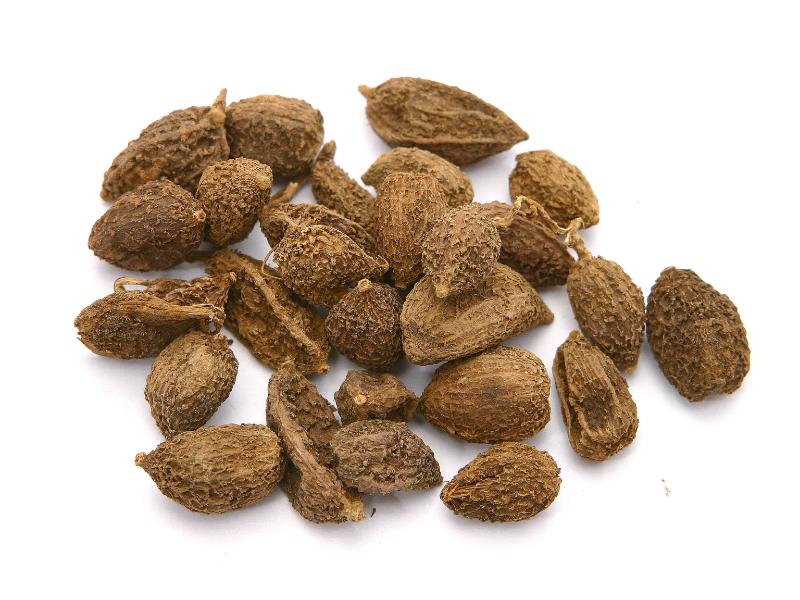Search in medicinals
Amomi Fructus
Amomum [fruit]
砂仁 〔砂仁〕 shā rén

Alternate Chinese names: 沙仁 shā rén; 缩砂仁 suō shā rén; 缩砂 suō shā
Kingdom: Plant
Origin in PRC Pharmacopoeia: Amomum villosum Lour.; Amomum xanthioides Wall.; Amomum villosum Lour. var. xanthioides T.L. Wu et Senjen; Amomum longiligulare T.L. Wu. (PRC Pharmacopoeia)
Origin in unofficial sources: Amomum villosum Lour.*; Amomum xanthioides Wall.; Amomum villosum Lour. var. xanthioides T.L. Wu et Senjen*; Amomum longiligulare T.L. Wu*
Use: Medicinal
Category:
Properties: Acrid; warm.
Channel entry: Spleen and stomach channels.
Actions and indications:
- Transforms dampness and moves qì: Spleen-stomach qì stagnation with dampness encumbering spleen-earth.
- Warms the center, checks vomiting, and checks diarrhea: Vomiting and diarrhea due to spleen and stomach vacuity cold.
- Quiets the fetus: Pregnancy vomiting due to qì stagnation; stirring fetus.
Dosage and method: Oral: 5–10g in decoctions; also used in pills and powders. In decoctions, shā rén is lightly crushed beforehand and added at the end of the decoction process.
Warnings: Contraindicated in yīn vacuity with heat.
Product description: The dried fruit is ovate or elliptical, 1–1.5 cm long, and 0.8–1 cm in diameter. The pericarp is brown, with soft thorns. Within are three chambers, each containing 12–18 seeds formed together in a mass. The seeds are about 5 mm long, and 3 mm in diameter, many-cornered in shape, and brown in color. They are hard and when bitten open, they release aroma and pungent flavor. This fruit is similar in form to Bái dòu kòu (白豆蔻 Amomi Fructus Rotundus, cardamom).
Quality: Large plump seeds with with a strong smell are the best. Vietnamese are considered better than Yangchun.
Production area: Amomum xanthioides (Yangchun amomum): Yángchūn, Yángjiāng, Luódìng, and Pánlóngshān in Guǎngdōng; Dōngjīn and Lóngxīng in Guǎngxī. Amomum villosum (Vietnamese amomum): Vietnam, Thailand.
Etymology: The name shā rén 砂仁, literally gravel kernel,
reflects the form of the fruits.
See: Bái dòu kòu (白豆蔻 Amomi Fructus Rotundus, cardamom)
Back to search result Previous Next